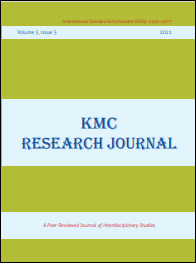Dual Identity of Pattharkatta (Kusbadiya) Community of Nepal
DOI:
https://doi.org/10.3126/kmcrj.v5i5.53577Keywords:
ethnicity, identity, caste, culture, strategyAbstract
Caste and ethnic categories are social and historical products. In the case of Pattharkatta2 , there was only (Tarai Dalit) caste identity among all Pattharkattas of Nepal before a couple of decades. Most of them shared origin myths, history, social memories (knowledge), and livelihood strategies. After the penetration of ethnic identity politics, there was a division among the Pattharkatta. Some of them claimed that they were Kusbadiya, not Pattharkatta, and listed themselves in an ethnic community of Nepal. The rest of them continued their caste identity and cultural practices. The government of Nepal also recognized both Pattharkatta and Kusbadiya. The researcher is interested to explore why the community changed and continued its identity. Is it possible to be a caste and an ethnic group at the same time? If yes, how and in which contexts? What are different evidences and cultural practices that support their claims of Kusbadiya and Pattharkatta? What are the motivational factors of identity change? What are the cultural relations between the Pattharkatta and Kusbadiya? By employing a mixed methods design, the researcher explored that the community has a dual identity. Politically active elites of Pattharkatta were influenced by ethnic activists in the name of the social security fund. When the marginalized community was lured by a per-month bonus, they were ready to change their identity. In spite of similar stories of origin and cultural practices, the community is officially recognized by two different names. There is no fixity to ethnic differences and boundaries of caste ethnic identity.
Downloads
Downloads
Published
How to Cite
Issue
Section
License
© Koteshwor Multiple Campus

